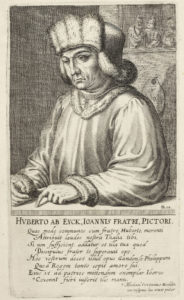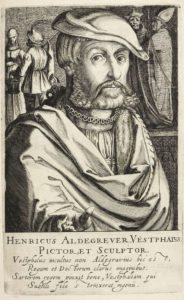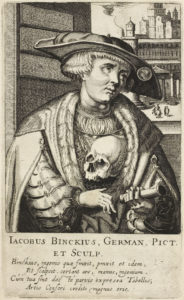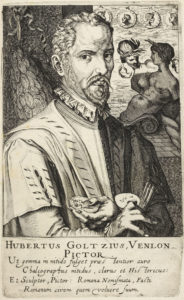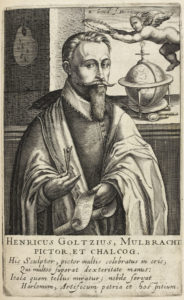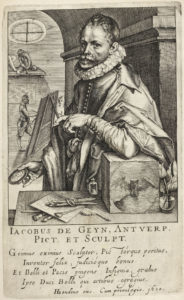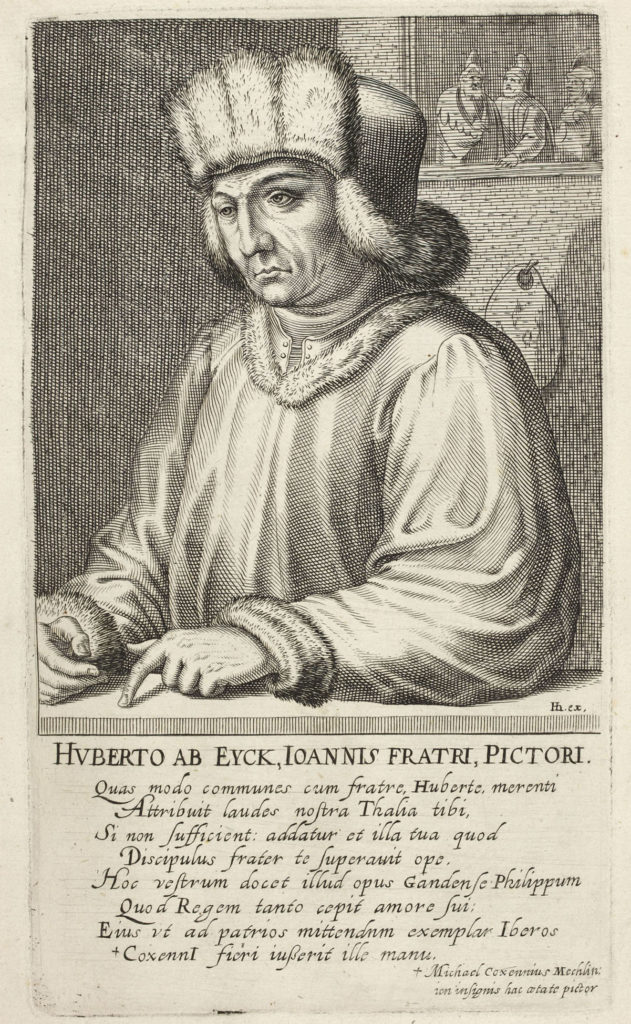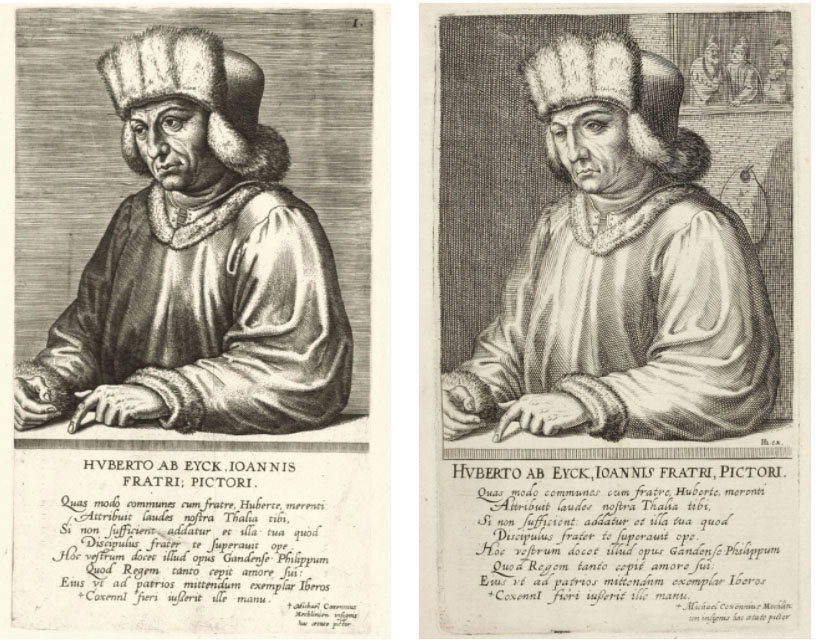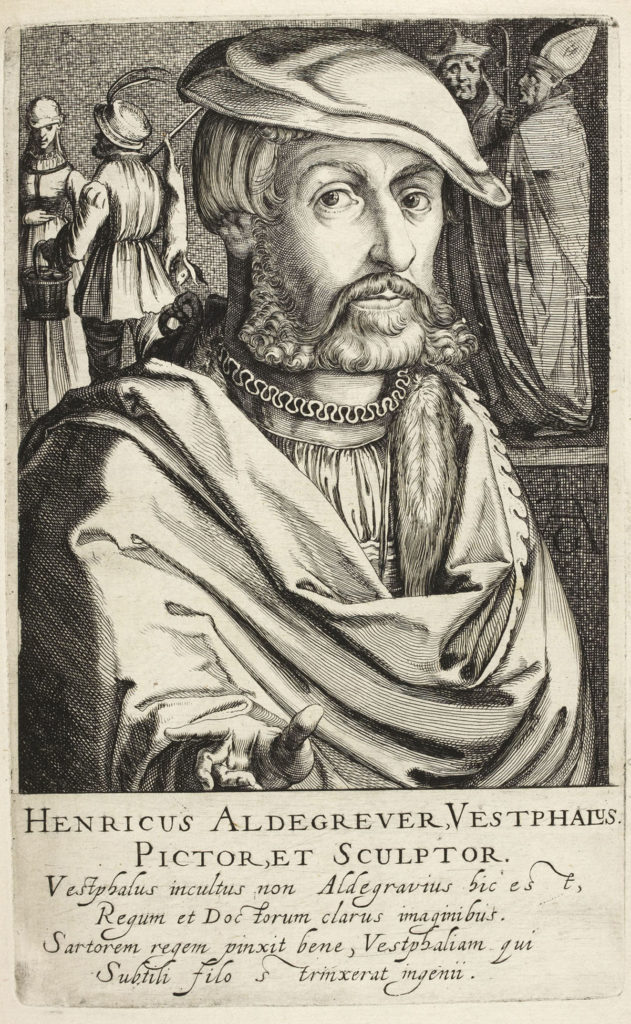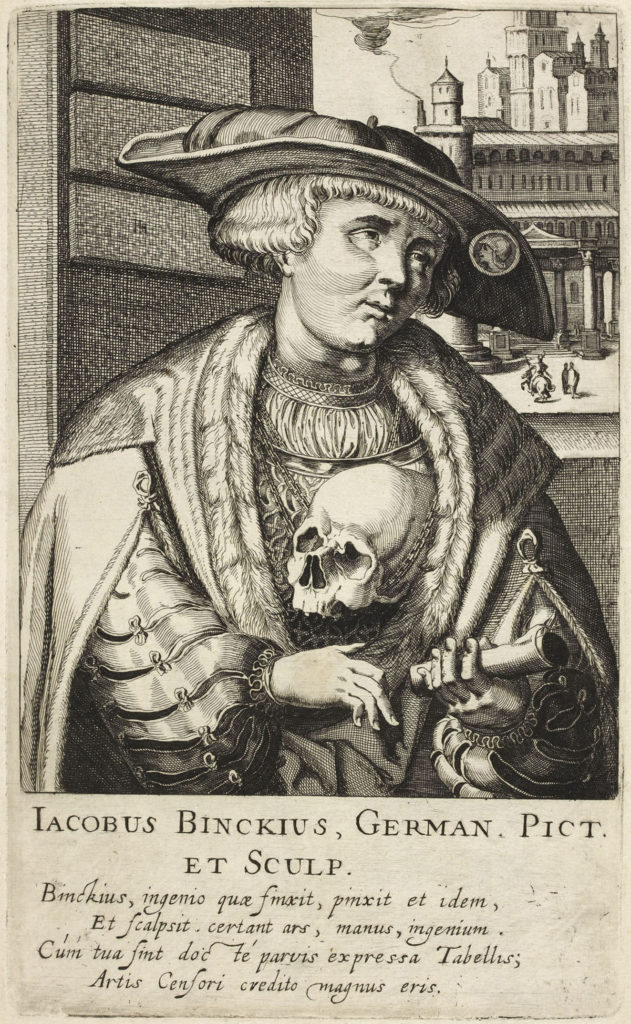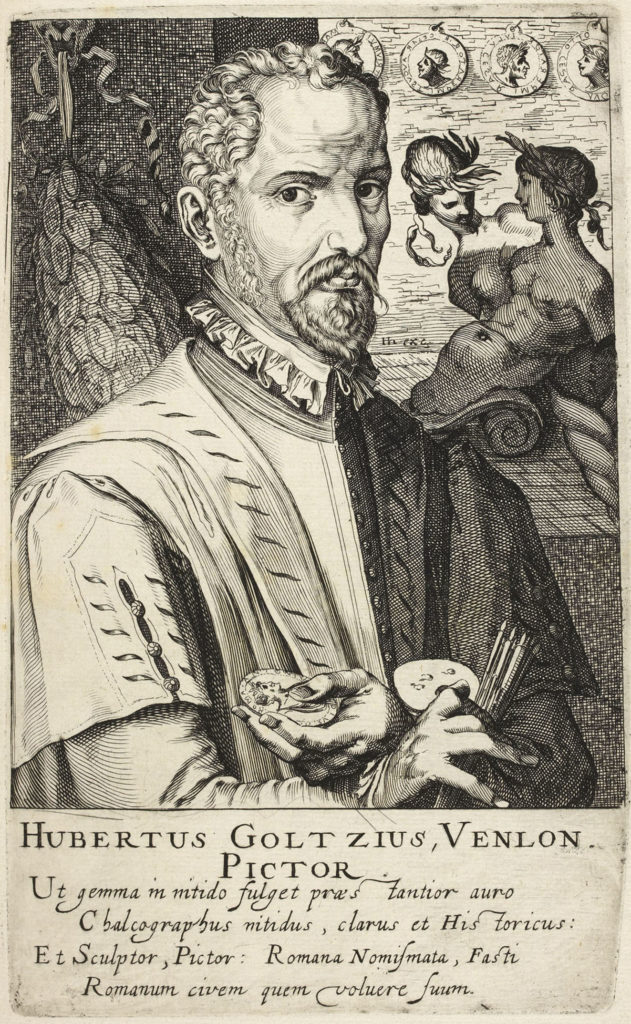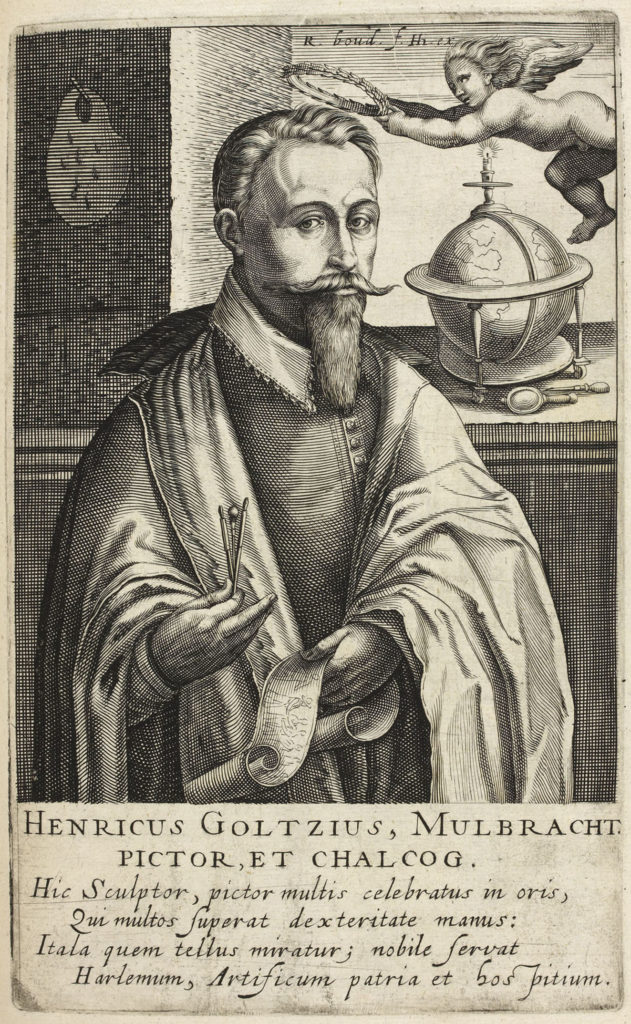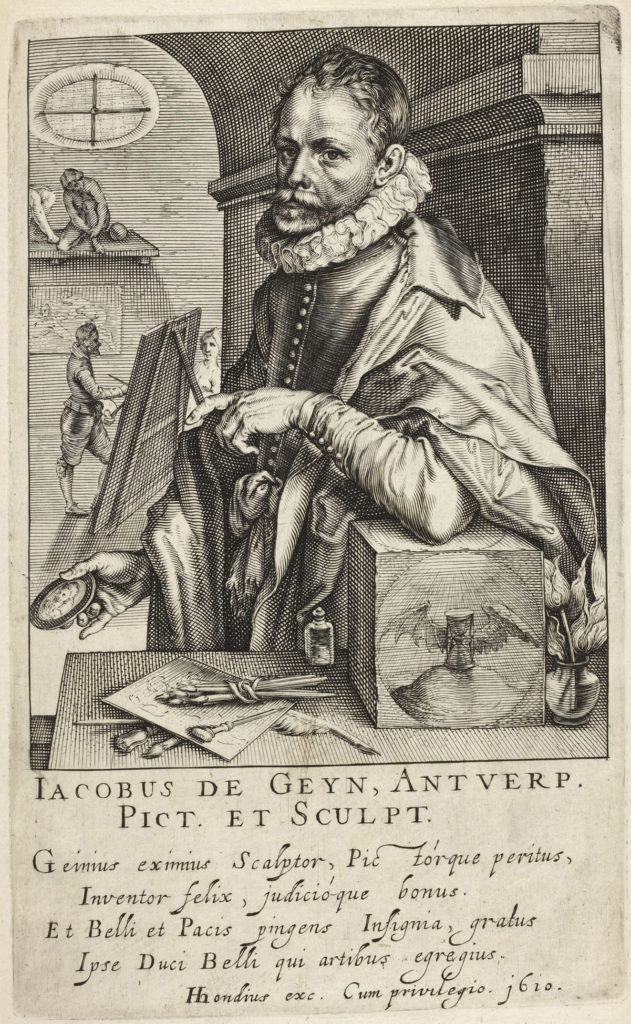Sculptors (as described in the texts that frame the portraits) in the Hendrick Hondius’s 1610 Pictorum.
6 people in this category.
Footnotes:
- One of the muses. Cf. The poem on Lucas van Leyden, “nostrae ...Camenae”.
- “ope” could also mean “wealth”. Either way, it’s hard to see (without knowing the context) how Hubert will feel this adds to his praises.
- This for “vestrum”, which is plural, so the work is being credited to both brothers.
- “amore sui” could also mean “love of himself”, but I am presuming that the author is referring to the Lam Gods.
- Jan van Leyden
- “ingenio... finxit”. Cf. the texts on 67. Maarten van Heemskerk, “finxit qui ingenio”; 83. Christian van den Queborn, “fingit at ingenium”; 111. Cornelius Ketel, “finxerat ingenio”. The combination is common enough in classical Latin (Cicero, Seneca, etc.)
- Does the author here mean “engraved” by “expressa”? Compare note on text for 89. Joos van Winghe.
- I am here translating as if the author had written the ablative “censore” instead of the dative “censori”. For metrical reasons, we can be sure he wrote “censori”, but translating the dative would give the extremely awkward “you will be great for the censor of skill, if he is believed”. I have little doubt the author meant what I have written. – See also the note 5 on “pictorum censor” in Poem to the Lovers and Admirers of Pictures.
- Sic.
- The author is apparently attempting to say that Goltzius knew enough about Roman coins and calendars to be a citizen of ancient Rome.
- “inventor felix” – the same phrase in the text on 91.
- "qui artibus egregius" - this clause could refer to either De Gheyn or the "duci belli".


